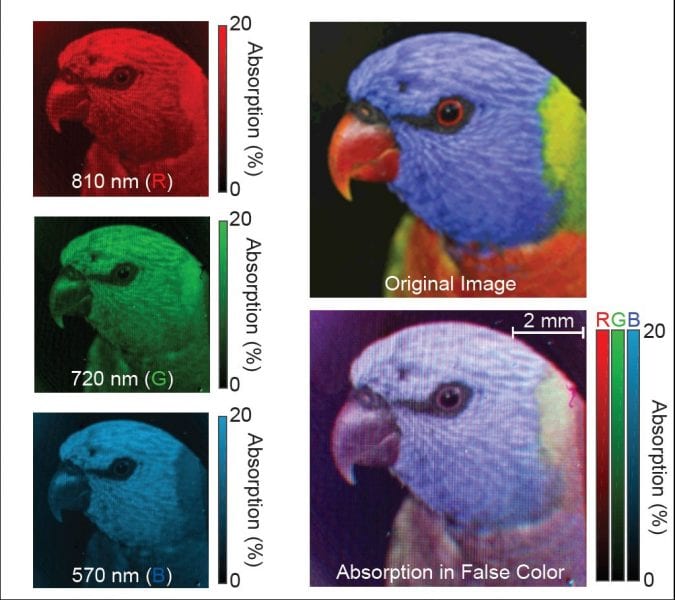Multispectral infrared (IR) imaging, an amalgamation of imaging and spectroscopy, is a critical tool for chemical and thermal sensing applications such as monitoring environmental pollutants, or detecting cancerous tissues. However, its widespread usage has been significantly hindered by the complex scanning optical systems required. A promising approach to bypass this issue is to replace the scanning optical systems with multispectral focal plane arrays, composed of spectrally selective pixels, but this is challenging.
Recently, metasurfaces consisting of subwavelength plasmonic resonators have demonstrated strong and spectrally selective absorption in the shortwave IR wavelengths, promising the realization of multispectral optoelectronics. However to date, plasmonic pixels or metasurfaces have been unable to simultaneously achieve narrow spectral selectivity, strong absorption, and scalable fabrication in the visible to near IR regimes.
Now, Maiken Mikkelsen and colleagues from Duke University, USA, report in Advanced Materials the creation of spectrally selective, highly absorbing metasurface pixels using a multiscale fabrication approach that utilizes a combination of bottom-up colloidal assembly to form the individual resonators and top-down photolithography to define the deposition of metasurfaces into multispectral patterns over multiple length scales. The plasmonic resonators, tuned from 580 to 1125 nm, are composed of colloidally synthesized silver nanocubes separated from a gold film with a 4–10 nm spacer layer.
To display the capability of this technique, the researchers fabricated a multispectral metasurface pixel array consisting of six resonances and reconstruct a red, green, and blue (RGB) image with a combinatorial pixel scheme exhibiting 9261 color combinations (see the image below). The only steps required for this process are dip coating, photolithography, and colloidal synthesis, which inherently make this fabrication method appealing for large-scale device fabrication.

Reconstructed RGB image. a) Absorption images at the three different resonances taken with same bandpass filters as in Figure 3f. b) Original down-sampled image used to create the photomasks. c) The final reconstructed image from the three different absorption images.

















